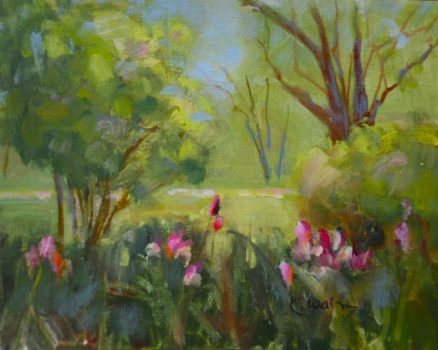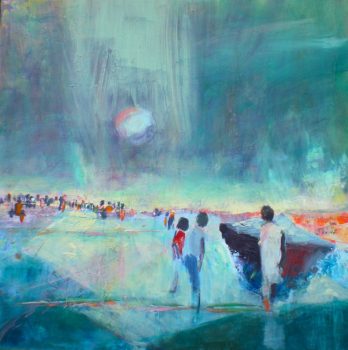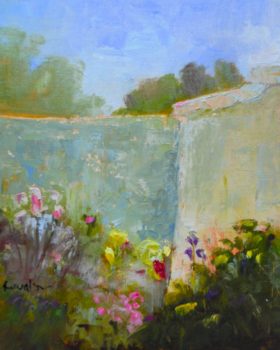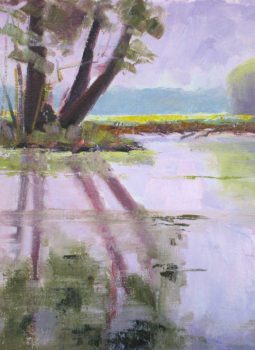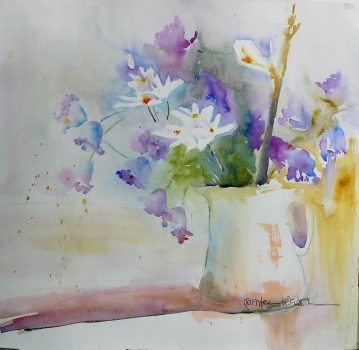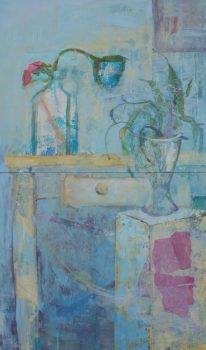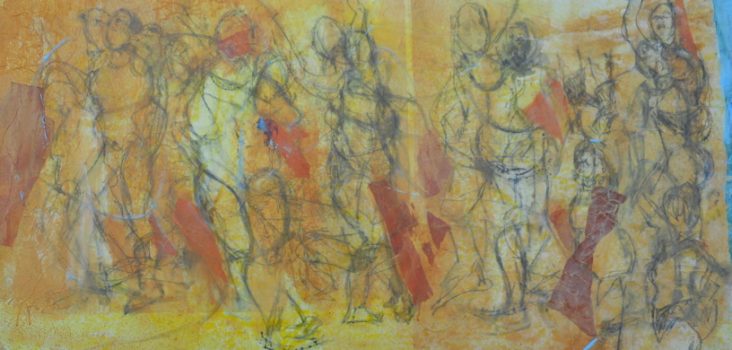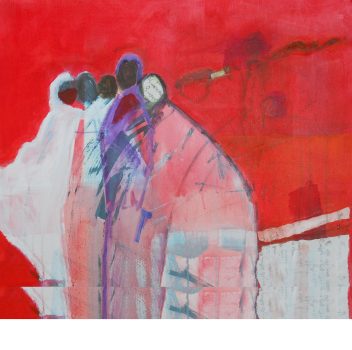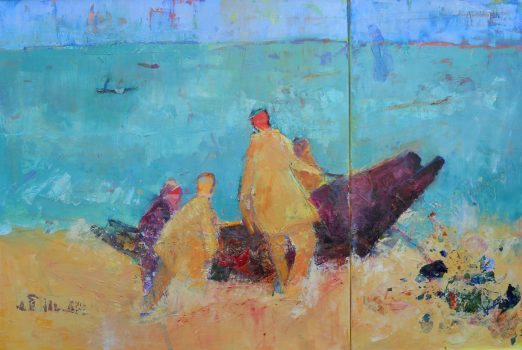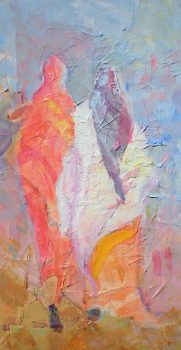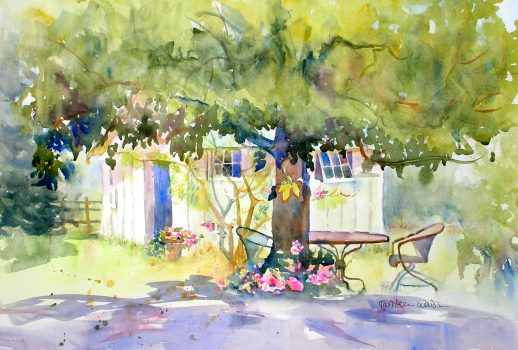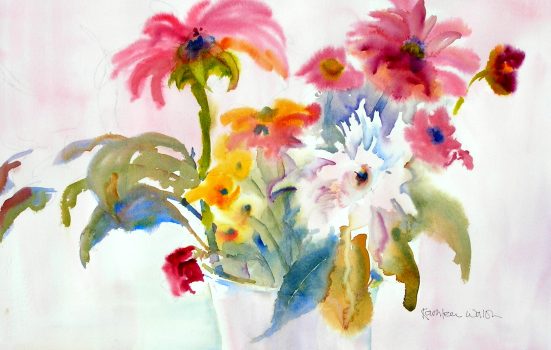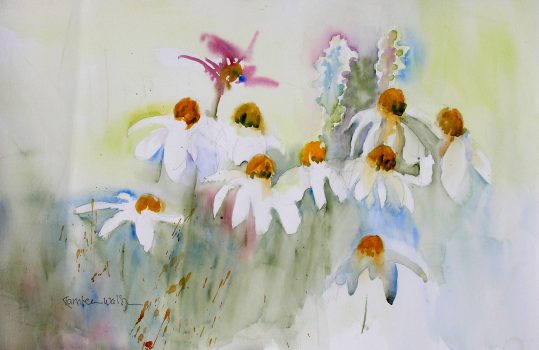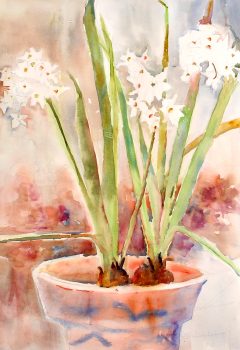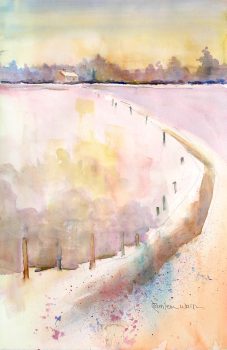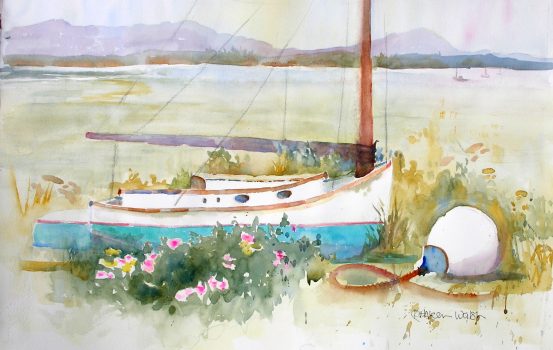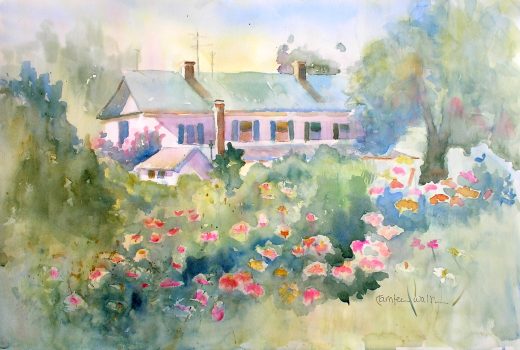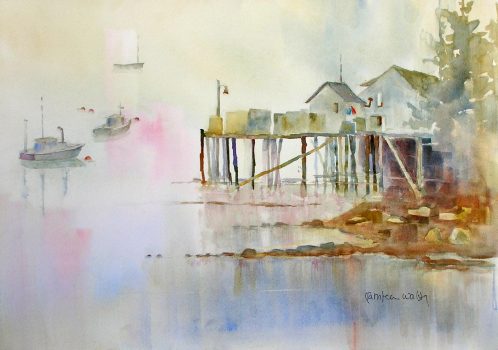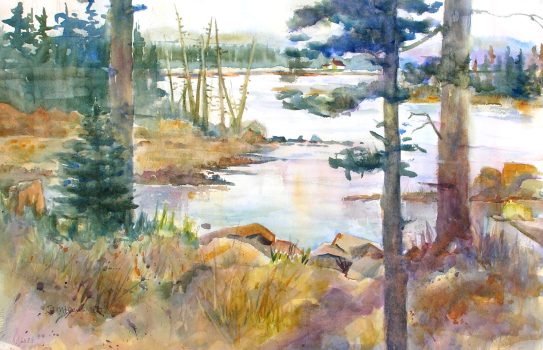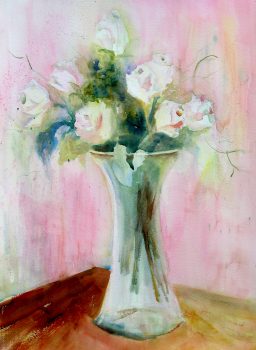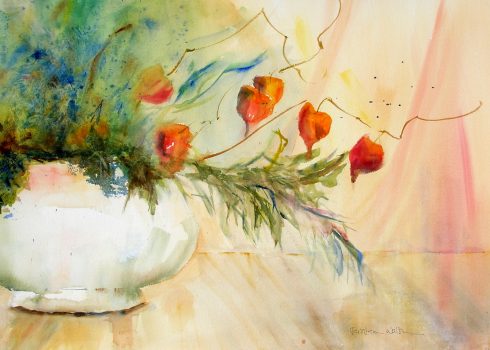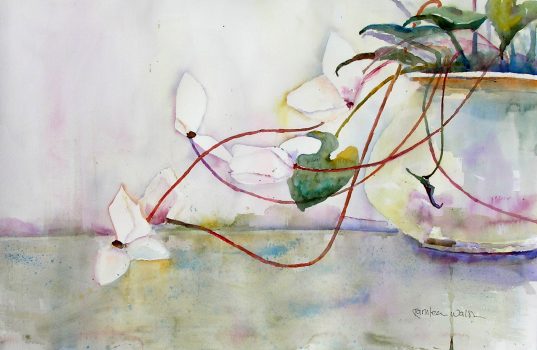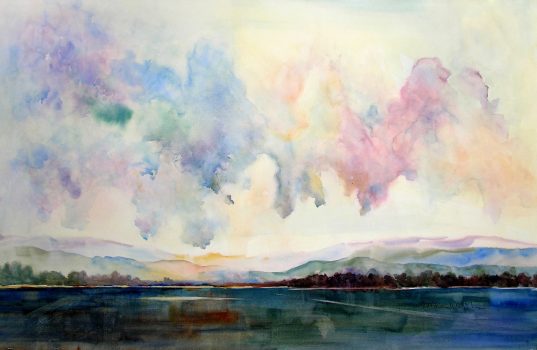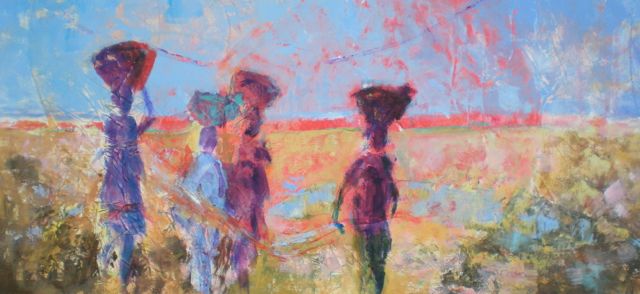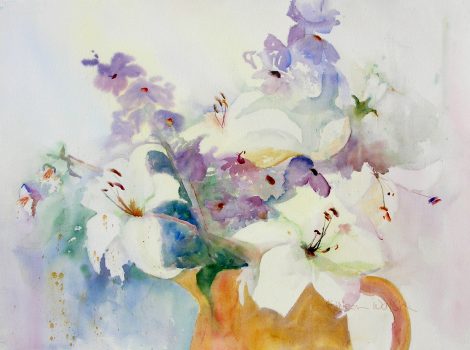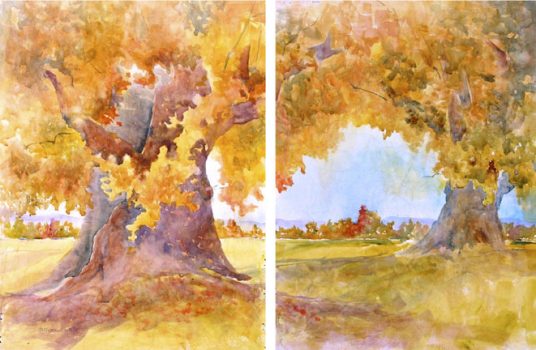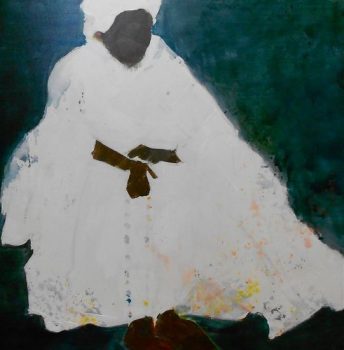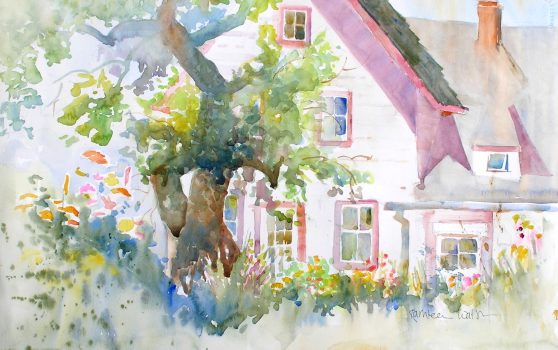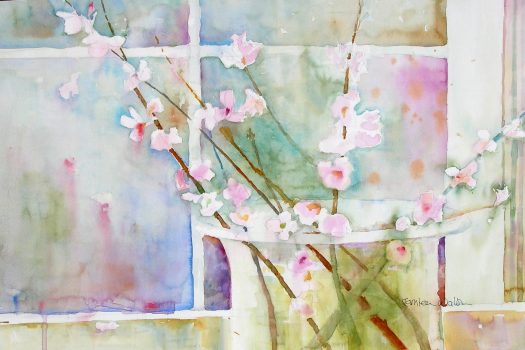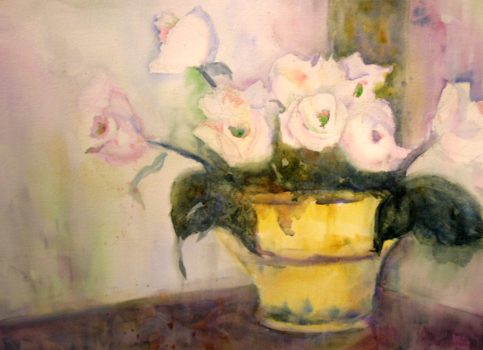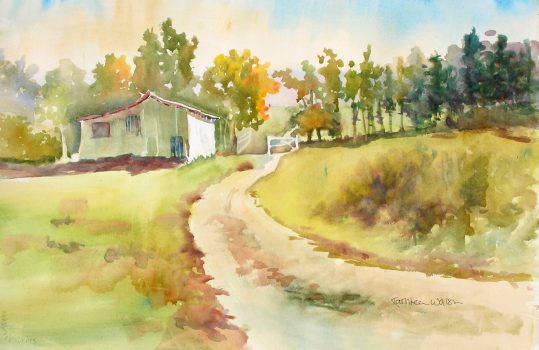
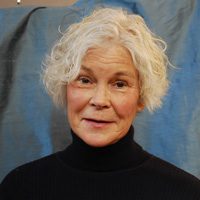
What can be gleaned in the art of a landscape artist, specifically the art of Kathleen Walsh? What can one find in her renditions of American farmlands, riverbanks, morning mists? African coastlines, deserts and grasslands? A sense of home, perhaps.
Of her art, she paraphrases Joseph Conrad, “My work is not to edify or console, to improve or encourage, but simply to get down on canvas some sense of the wonder of life, of its unfathomable romance and mystery. I paint that you might see, a little, of what I see. Nothing more, but that is everything.”
Walsh’s journey into art came later in life. Raised the oldest of 9 children in rural New England, earning one’s keep was serious business. Like most of her sisters she studied nursing, returning to university in the 80’s to study psychotherapy. Her first insight into serious art came in Warsaw, Poland in the 70’s. In Poland the arts were the people’s stronghold against Communism. Then Director of the Polish Radio and Television Orchestra and Choir in Kraków, Antoni Wit, commented, “When we come together to play, we create an island of beauty in sea of rough waters.” That comment made an impression. Art was more than a sheet of music or a colorful canvas, art was a powerful means of expression. It was a voice.
It was not until the 90’s that Walsh began to consider her own art. In Geneva, Switzerland, life threw an unexpected punch. She was unable to obtain a work permit, then broke her leg. With few options, she took part time work teaching and consulting, and began studying with local artists eventually finding Janis Pozzie-Johnson. Working with Pozzie-Johnson she found a passion for art, an energy that holds to this day.
Back in the states Walsh continued studies at the Art League School of Alexandria, Virginia, periodically seeking out master artists such as Johnny Johnson and Makoto Fujimura. In 2006 she opened a studio at Libertytown Arts Workshop, a converted plumbing supply store.
A major point of development was her introduction to plein air work. An outdoor person by nature, there was no turning back. Three seasons of the year she paints plein air. Welcomed by townspeople, she is invited regularly to paint at nearby farms, in private gardens, on riverfronts, mountain properties and street corners. In the winter she moves to the studio, working on larger, more abstracted images and wrestling with scale, color and form.
In 2008, she returned to Africa where she had previously lived for 7 years working and raising a family. This time she carried into the field a sketchbook and paints, and while on assignment made sketches. Far off the tourist path, she sought out local artists, meeting and sharing ideas about texture, shape and symbols. In the village of Safane, Burkina Faso, a group of weavers and dyers gathered to talk with her about family, cotton growing, indigo and the stories woven in to their cloths.
